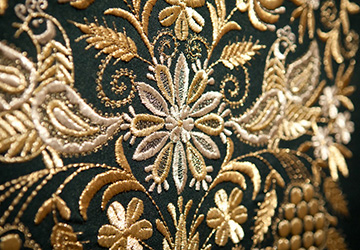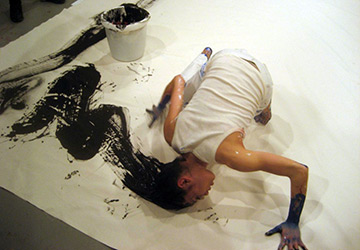Art
Gzhel craft - history, dishes and embroidery
mystyle.decorexpro.com/en/ loves real art, and Gzhel is real folk art. The beauty of the blue and white winter color is reminiscent of the Russian winter landscape.
Gzhel is an old Russian village on the banks of the Gzhelka River, in the Ramensky District, 60 km from Moscow. The village got its name from the word that comes from the lexicon of ancient potters - "zhgel", or "burn", "burn". In the vicinity, near the village, there are the richest deposits of clay, so potters have long lived here, who knew how to understand and feel the clay, could determine the thickness of the walls of the product with their fingers.
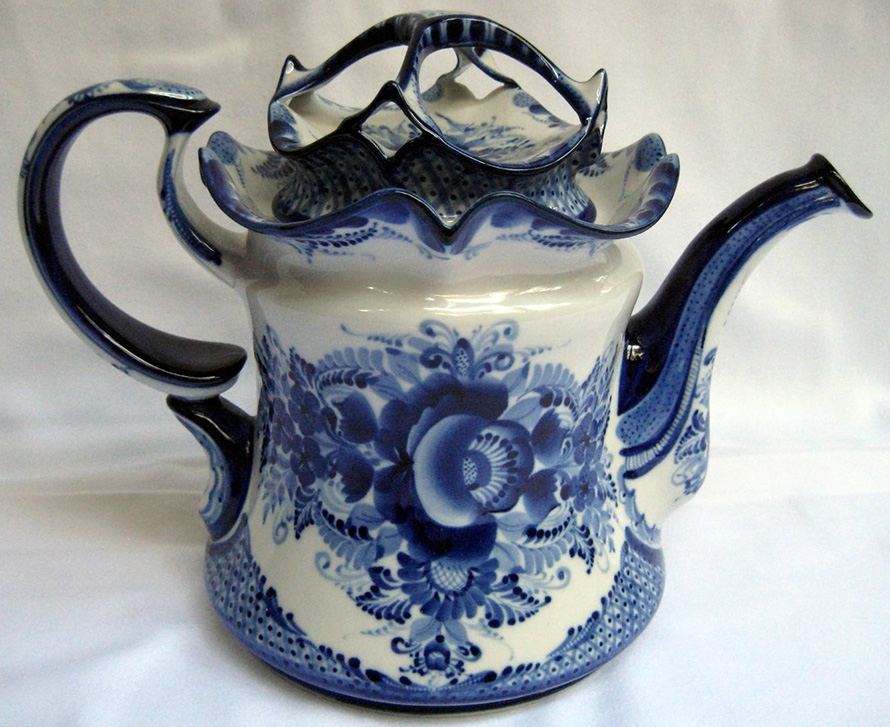
Around Gzhel there are other villages whose inhabitants are engaged in pottery - Troshk? Vo, Glebovo, Rech? Tsy, Turygino, Bakhteevo and many others. The area has endowed this nature with a deposit of refractory clay, therefore, since ancient times, all residents have been engaged in pottery since childhood. Digging clay is not easy, and it is not so close to the surface.
Clay deposits alternate with a layer of sand, and through each layer there is a different kind of clay. The first is simple red clay - "shirevka", the second - "fur" (yellow), at the very bottom is clay - "soapy", which is used to make faience and porcelain. The last clay is the best, white in color, but it is not so easy to get to it.
Making dishes was also not an easy task, and experienced craftsmen were engaged in it, the children helped to pour the glaze on the finished products, and the girls painted them and then fired them. The manufacturing technology in each village was different, and it was carefully guarded in secret from neighbors, which was passed on to the sons by inheritance.
Pottery masters made utensils: milk jugs, bowls, ferments, jugs, pots and pots; and they did not forget about fun for the children - they made whistles and various figures. By decree of Tsar Alexei Mikhailovich, all Gzhel was assigned to the Pharmaceutical Order in order to make dishes. Therefore, the Gzhel peasants were never serfs.
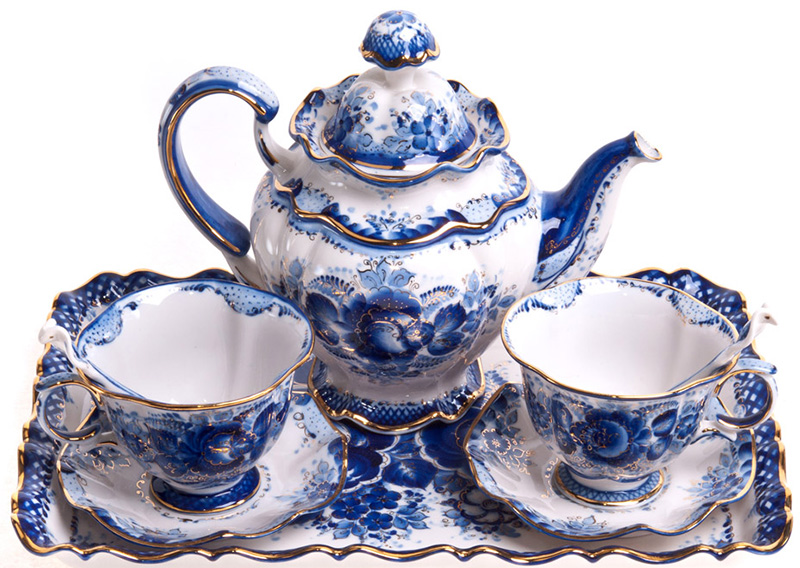
In the 18th century, a friend of the great M.V. Lomonosov, a chemical scientist Dmitry Vinogradov, nevertheless, unraveled the Chinese secret of porcelain. In Russia, the first porcelain cup appeared in 1749. It was Vinogradov who organized the first porcelain manufactory (later - the Imperial Porcelain Factory - IPZ). Even today, porcelain production takes into account some of the subtleties noted by Vinogradov.
Since the end of the 18th century, porcelain tableware was considered not only the pinnacle of taste, but also testified to the wealth and status of the owner. Although in the period XVIII - XIX, some gentlemen from society did not understand the nobility and grace of porcelain tableware, considering it too simple, therefore they preferred silver and gold. And ordinary people used to have wooden, ceramic or metal dishes.
It was from Gzhel clay that Russian porcelain was first made. Since then, artels for the production of porcelain began to arise, which grew into small factories. In 1871, there were already about 100 such production organizations. The Gzhel peasants lived quite well, earning their own labor, because the Imperial Court itself ordered Gzhel porcelain. And local breeders were awarded with silver medals. Gzhel services sometimes reached 150 people ...
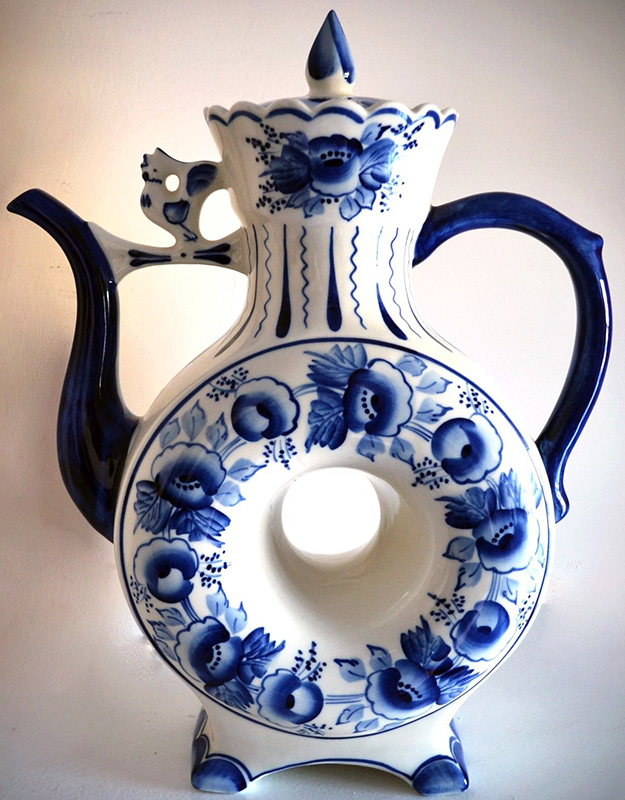
And then what ...
“... the Russian sun went out
Further, my story is dark,
Then it is white, then red,
As long as not about us.
Further leather jackets, executions,
Whistle whistle and blade, ... "
The time has come for dispossession. After the October Revolution, in 1918-1919, all factories in the Gzhel region were nationalized. Some of them, the largest and most well-equipped, became state-owned.To put it simply, the selected faience factories built by the ancestors of the Barmin brothers, Akulin brothers, Dunashov brothers and many, many others. These were pottery dynasties, and their factories were acquired by many years of work.
Soon the Gzhel craftsmen realized that if no one helped them, then the pots would have to be brought from other places. It's good that such people were found. In 1933, in the village of Turygino, where the factory of the Dunashov brothers was located, came those who loved the ancient craft - the art scientist Alexander Saltykov and the artist Natalya Bessarabova. It is about them that should be mentioned, although there were quite a few of them. They revived the Gzhel craftsmanship and developed their own style - blue patterns on a white background, because Gzhel used to be multi-colored.
The dishes were painted with yellow, red and green paints. And then Gzhel was not a luxury item. Gzhel dishes - jugs for milk, ferment, bowls, mugs were intended for ordinary people, and even for taverns. Today blue, bright blue, cornflower blue, the color of the sky, etc. - corporate colors of the Gzhel painting. But for themselves, Gzhel craftsmen occasionally make dishes of different colors.
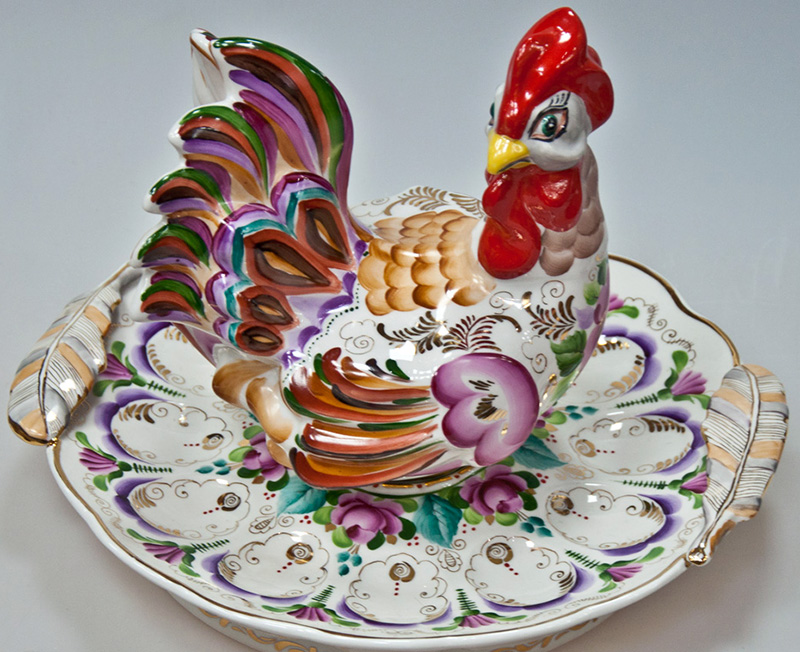
Painter's tool - brushes, a palette, a spatula for mixing paints and a jar of cobalt oxide. Cobalt is a special ceramic paint, which is initially almost black, like soot, and becomes bright blue only after firing. The Gzhel craftsmen have over 20 shades of blue, which is obtained after firing. Now you can imagine what wonderful artists and craftsmen make beautiful Gzhel.
What are the plots on Gzhel? This is, first of all, nature and seasons, especially Russian winter. There may be scenes from city and country life, characters from Russian fairy tales, blue birds, blue flowers, etc.
Unfortunately, among the blue and white gamut, fakes under Gzhel very often come across. A handmade stamp on yellowish items decorated with blue motifs is not Gzhel.
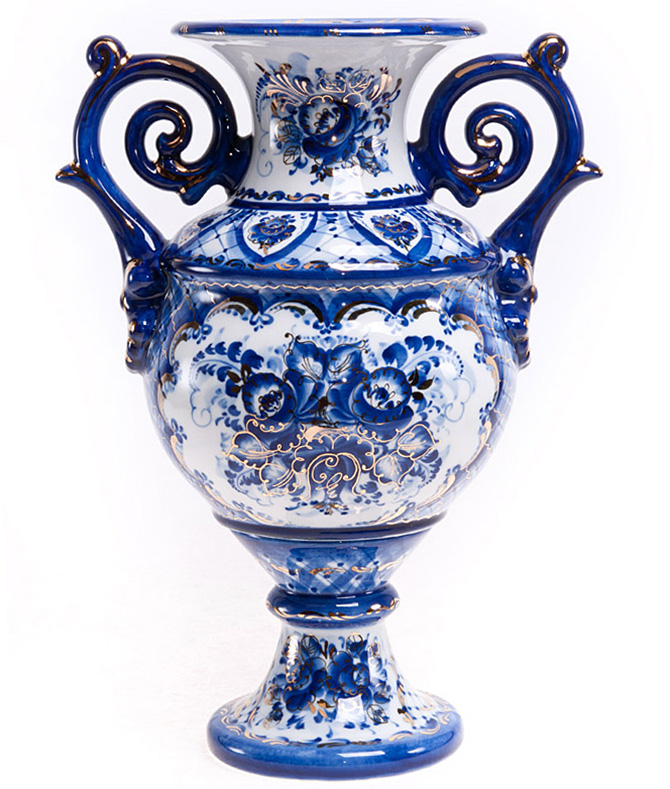
How to find or distinguish a real Gzhel? It is not simple. You need to search for products of real masters, which at first glance fascinate. Look at the drawing - on the product of a real master, everything is done with love, without haste, there are no random smeared stitches on it.
On real Gzhel products, all the smallest details are thought out, polished, the products are convenient to use (if the holes in the dishes are such that it is difficult to use them, or the teapot and cup are unstable, and the lids are not tightly pressed - this is not the same Gzhel). If you need porcelain Gzhel, then its first property is that it is very light, if you don’t feel it, it’s faience. Porcelain (from Turkish farfur) is a fine ceramic product, unlike faience, it is more durable and impervious to water. These are white, sonorous, translucent in the thinnest layer of the calyx.
The porcelain components are kaolin, plastic clay, quartz and feldspar. In what proportion? - And this is already a secret! Faience (from the French faence) - products made from it can also be made of fine ceramics, but dense and porous, they emit a dull sound when struck. Earthenware easily absorbs moisture, so all earthenware products are covered with a continuous layer of glaze. Faience is easier to crack and break. If the glaze is cracked on the earthenware cup, you can already throw it away. The components of earthenware are the same as those of porcelain, but in different proportions.
And the most distinctive feature of a real Gzhel, even if you don't look closely at all the smallest details, is the price. The real Gzhel of the author's work is highly artistic, unique, which cannot be cheap, another thing is factory production line work, which makes a profit. Therefore, you have to choose - either cheap or expensive with real artistic traditions.
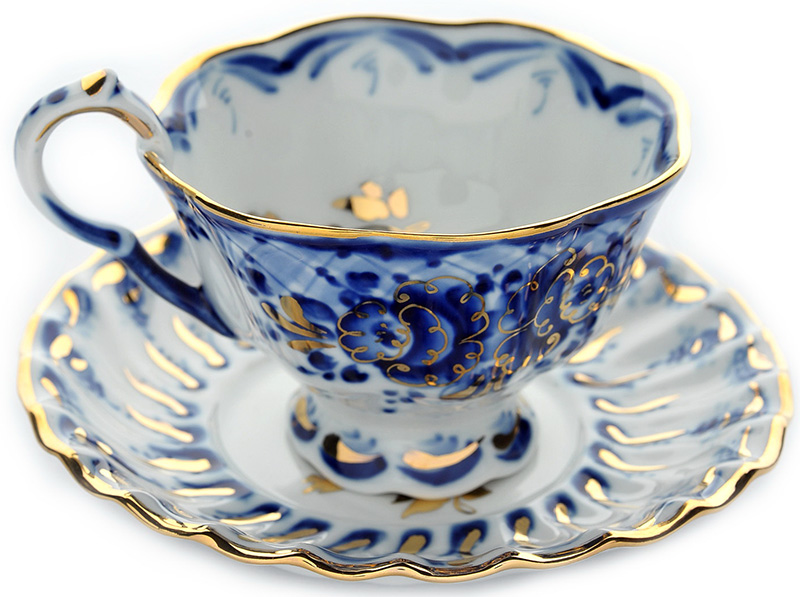
However, most of us also need inexpensive products, but they must also have a Gzhel brand. On the bottom of the product there must be a Gzhel stamp (stamp). At the state plant "Association Gzhel" - a two-headed eagle with the inscription "Gzhel". If the work is original, then it bears the author's mark and the surname of the master-artist.
If you are “on fire” to buy Gzhel dishes, think about how it will fit into your interior, you may have to change something, because Gzhel loves blue and white frames, that is, the interior should be accompanied by Gzhel, but it's so beautiful.
By the way, embroidery in the style of Gzhel paintings will help create a unique atmosphere in your home.
Embroidery Gzhel
In patterns of embroidery, reminiscent of Gzhel, motifs of a plant character are most often used. Patterns can consist of small or large motifs, which include flowers, leaves, berries, occasionally there can be separate patterns depicting people and animals surrounded by plants.
Various stitches and surfaces are used in embroidery, mainly a stalk stitch, "forward needle", a stitch "for a needle", chain stitch, "cross", Vladimir stitches, which are quite diverse in themselves, and very often the technique of the Msterskaya surface is used - stitch with flooring, "loose".
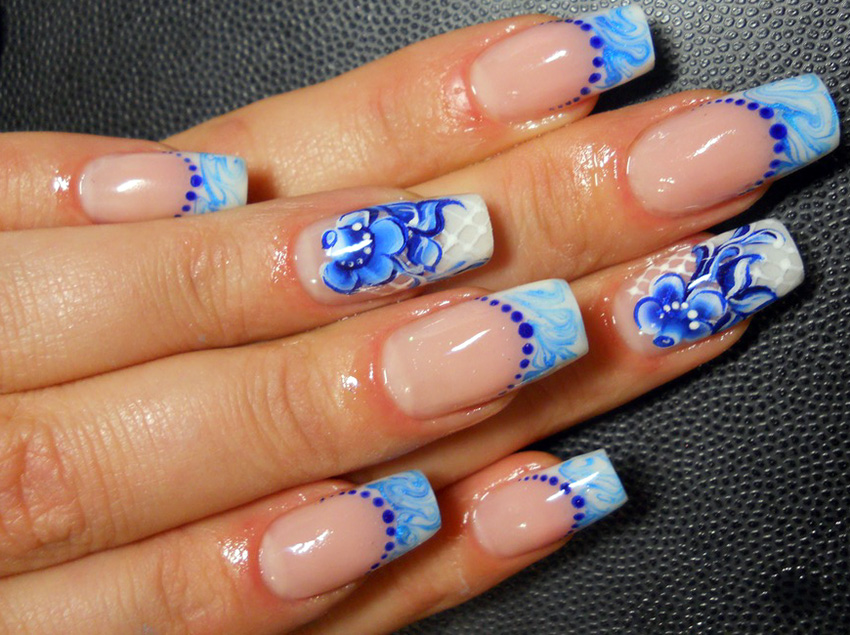
Embroidery in one motif can be built both in one kind of seam or surface, and in combination with each other.
Gzhel does not like colors in the interior - it contains shades of blue and white, and in one embroidery shades of blue also do not have a great variety, the maximum presence of three blue ones is allowed - for example, cobalt, cornflower blue and pale blue. Sometimes the white color replaces just a white canvas on which the product is embroidered, that is, white threads are not present in the embroidery itself. Gzhel is most often embroidered with floss threads, depending on the type of product and the technique of execution, the threads are taken in several additions.
Therefore, if you are far from the art of pottery, you should not be upset, embroidered products in the Gzhel style will help you. And not only embroidery, but also beaded weaving.
For those who love blue, Gzhel jewelry is one of the best. There can be a combination of beads or beads of blue color and white mother-of-pearl of different sizes, and white pearls in combination with blue are just a fairy tale!
This is how Gzhel she is - in pottery, in embroidery, and in blue and white beads.

Comments and Reviews
Add a comment
Rating news
Shades of clothing that make women look younger
What shades of hair make women younger: rules and photos
Funny wedding dresses - photos and ideas
12 most expensive down jackets for the winter
How to look 25 at 40: tips from supermodels
Beautiful schoolgirls
Anti-aging haircuts and hairstyles for women
Fashionable skirts for autumn and winter
Fashionable women's trousers for the cold season
Fashionable and stylish sandals for summer 2024
Spring-summer 2024
 Fashionable dresses and tops with thin spaghetti straps
Fashionable dresses and tops with thin spaghetti straps
 Bandana tops: how to wear stylishly and beautifully
Bandana tops: how to wear stylishly and beautifully
 How to put together the perfect men's wardrobe for the summer
How to put together the perfect men's wardrobe for the summer
 Trendy shorts for spring-summer 2024
Trendy shorts for spring-summer 2024
 Fashionable skirts for spring-summer 2024: a guide to online shopping
Fashionable skirts for spring-summer 2024: a guide to online shopping
 The most fashionable dresses spring-summer 2024: styles and colors
The most fashionable dresses spring-summer 2024: styles and colors
 Fashionable total look 2024: image ideas and trends
Fashionable total look 2024: image ideas and trends


